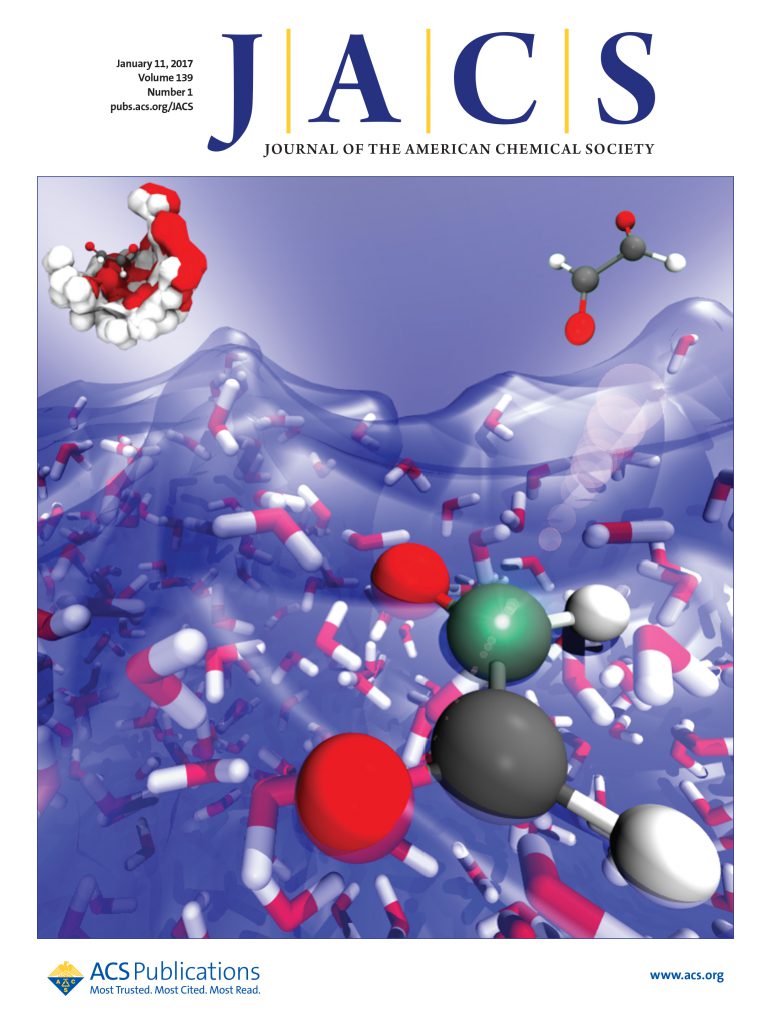Warhead Strategy for Targeted Protein S-Nitrosation.
IF 14.4
1区 化学
Q1 CHEMISTRY, MULTIDISCIPLINARY
引用次数: 0
Abstract
Protein post-translational modifications (PTMs) are critical factors in disease progression. While progress has been made in regulating disease-associated PTMs such as phosphorylation and acetylation, the approach to achieving targeted S-nitrosation for disease treatment, particularly in vivo, remains largely uncharted. This challenge arises because S-nitrosation is primarily mediated by nitric oxide (NO), a gaseous free radical that complicates efforts to confine the effects of NO to a specific protein. Herein, we designed and synthesized α-(NONOate-O2-yl) methyl acrylamides as in situ NO-releasing warheads linked to a Bruton's tyrosine kinase (BTK)-specific skeleton, resulting in targeted S-nitrosation agents (TSNO1-6). These TSNO compounds covalently bind to BTK, releasing NO in situ, which then reacts with BTK to achieve targeted S-nitrosation. Notably, cellular and tissue proteomic studies confirmed that TSNO1 effectively accomplished targeted S-nitrosation of BTK at Cys527, demonstrating promising in vitro and in vivo antitumor activity. Mechanistic studies indicated that S-nitrosation at Cys527 enhanced phosphorylation inhibition at Tyr551 compared to ibrutinib, impeding BTK activation and providing an additional therapeutic benefit beyond covalent inhibition. In addition, we generally extended this strategy to FGFR4 and HER2. Collectively, utilizing the warhead strategy enables us to implement targeted modulation of S-nitrosation.靶向蛋白质s -亚硝化战斗部策略。
蛋白质翻译后修饰(PTMs)是疾病进展的关键因素。虽然在调节疾病相关的PTMs(如磷酸化和乙酰化)方面取得了进展,但实现靶向s -亚硝化治疗疾病的方法,特别是在体内,在很大程度上仍是未知的。这一挑战的出现是因为s -亚硝化主要是由一氧化氮(NO)介导的,一氧化氮是一种气态自由基,使将NO的作用限制在特定蛋白质上的努力变得复杂。在此,我们设计并合成了α-(nono_3 - o2 -yl)甲基丙烯酰胺作为原位no释放弹头,连接到布鲁顿酪氨酸激酶(BTK)特异性骨架,从而产生靶向s -亚硝化剂(TSNO1-6)。这些TSNO化合物与BTK共价结合,原位释放NO,然后与BTK发生反应,实现靶向s -亚硝化。值得注意的是,细胞和组织蛋白质组学研究证实,TSNO1有效地完成了BTK在Cys527的靶向s -亚硝化,显示出良好的体外和体内抗肿瘤活性。机制研究表明,与伊鲁替尼相比,Cys527位点的s -亚硝基化增强了Tyr551位点的磷酸化抑制,阻碍了BTK的激活,并提供了共价抑制之外的额外治疗益处。此外,我们通常将该策略扩展到FGFR4和HER2。总的来说,利用弹头策略使我们能够实现s -亚硝化的靶向调制。
本文章由计算机程序翻译,如有差异,请以英文原文为准。
求助全文
约1分钟内获得全文
求助全文
来源期刊
CiteScore
24.40
自引率
6.00%
发文量
2398
审稿时长
1.6 months
期刊介绍:
The flagship journal of the American Chemical Society, known as the Journal of the American Chemical Society (JACS), has been a prestigious publication since its establishment in 1879. It holds a preeminent position in the field of chemistry and related interdisciplinary sciences. JACS is committed to disseminating cutting-edge research papers, covering a wide range of topics, and encompasses approximately 19,000 pages of Articles, Communications, and Perspectives annually. With a weekly publication frequency, JACS plays a vital role in advancing the field of chemistry by providing essential research.

 求助内容:
求助内容: 应助结果提醒方式:
应助结果提醒方式:


